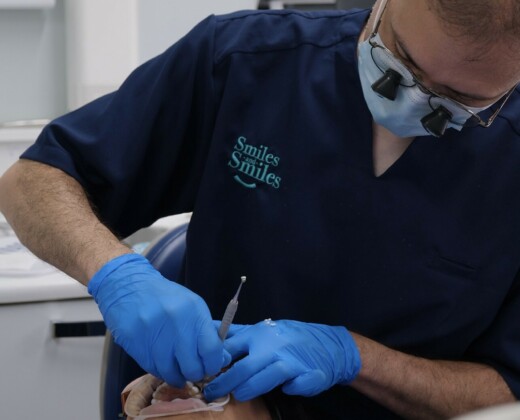Anisha Joshi, a.k.a OsteoAnisha, is an award-winning osteopath with a high-profile clientele (Rita Ora and Professor Green to name a few) and a passion for sharing the healing powers of osteopathy.
As most of us continue to work from home, without the assistance of a proper workplace, it’s easy to forget about the damage that sitting down, and a lack of exercise can do to our bodies. On top of this, the stress and anxieties of the pandemic don’t help with muscle tension and general comfort.
That’s where Anisha is stepping in, offering her years of expertise and experience, she has created affordable plans to help you rehabilitate and ease injuries from home, using her own mix of holistic and educational approaches. Anisha has answered our questions to help you prevent and combat the strains caused by this pandemic, everything from her incentive behind her plans, to products to help your posture at home.
So your practice is praised by the likes of Rita Ora and Nick Grimshaw and you’ve won awards as a principal osteopath, with your care described as a mix of holistic and medical. How do you combine the two in your clinic?
Osteopaths have undergone a 4-5 year degree which incorporates orthopedics, neurological testing and pharmacology. With this knowledge we take a case history in a patient’s first appointment to take all aspects of their lifestyle into consideration. For example, a patient that suffers with neck pain may need to adjust their work station and also incorporate mindfulness in help with stress that quite often manifests in your shoulder muscles.
You have a project called The Stronger Body Plan which allows people to treat their injuries and prevent further pain from home, which we’re sure became very convenient during this pandemic. What was your reasoning behind this idea? What does the plan entail?
I realised that in my clinic the majority of the aches and pains experienced were very similar as we now live in a society where screen time and HIIT (High-intensity interval) training are the new normal. Patients kept presenting similar aches and pains and I realised what exercises and self-help techniques helped them recover quickly.
I decided to create the stronger plan and split it into areas of the body that most commonly cause pain and discomfort. I have the Upper Body, Lower Body, Hips and Knees. They contain a series of strengthening exercises and foam rolling techniques that can help reinforce the strength around those areas of your body.
You must find correlations and trends in certain osteopathic problems like this all the time. What, from your experience, is the biggest complaint from clients that corresponds to the pandemic at the moment?
I have seen a big rise in headaches that are caused from stress and neck tension. I’ve also seen new complaints of more jaw pain which can also cause headaches from people adapting to masks and hip pain from the increased levels of sitting at home.
With these increased levels of sitting at home, from a lot of people working without the situation of an office space, how can we fix our posture to prevent back pain while working remotely?
Try your best to use a chair that goes up and down, but failing that, always sit on a hard chair, at the back of the seat. Try to use books to lift up your screen to eye level and bring the screen closer towards you. Quite often we lean into our screens when concentrating and this can lead to neck and head pain.
If you get lower back pain, you can put your laptop on your ironing board to then alter the height of your workstation and create a makeshift standing desk.
What are other ways to prevent further back pain while working from home?
It’s important you keep moving. So many people underestimate how much they move in an office setting, even if it’s to get up and talk to a colleague at their desk. Try to step away from your workstation every 45 mins to an hour if you can. Set an alarm on your phone!
Also try not to sit with your legs crossed.
“It is important to keep moving. Try to step away from your workstation every 45 mins to an hour if you can“
There are plenty of ways that we can invest in our home office areas to maximise comfort and concentration and prevent these pains even further. Are there any items you’d recommend to help with posture and back pain while working from home?
- Investing in a good chair that goes up and down and has arm rests is probably the best thing I’d recommend you get.
- A laptop stand to bring your screen to eye level.
- A Bluetooth keyboard so that you can have your forearms resting on the chair armrestsis great.
- Some people find resting their feet on a foot rest can reduce the pressure in their lower back.For those of us that need further osteopathic help with strains, aches and pains, clinic visits and consultations are an important part of getting back to comfort and regularity.
In light of the pandemic and the strain on medical services, people may feel discouraged from seeing an osteopath, or like their pains and strains aren’t important. What’s your message to encourage people that they should still consider treatment at the moment?
Osteopaths are considered essential healthcare and were asked to reopen in lockdown 1 along with Dentists. The reason for this is that by addressing your aches and pains it prevents them from getting worse and needing more medical intervention that requires more urgent hospital care. This in itself is reducing the strain on the NHS massively and ensuring you are able to work and stay on your feet throughout this time.
Now obviously this is a stressful time for everyone, with the working from home, the worrying about loved ones and the alienation of lockdown. These anxieties can be detrimental to our bodies from our physical health to our sleeping patterns. How does stress and anxiety affect the body in terms of osteopathy?
Stress has a huge impact on the body. When we are stressed our breathing changes and this can cause us to hyperventilate subconsciously. Just an altered state in our breathing can impact the rib cage movements, the diaphragm and the neck. Stress also causes teeth clenching and for us to hold our shoulders in a constant state of tension. The muscles that attach onto your jaw and neck are all closely linked to neck pain, upper back pain and this can predispose to headaches. An Osteopath is trained to be able to relax the muscles associated with stress to reduce these symptoms and reduce the level of pain in the patient. Stress can also lead to insomnia and sleep is the most consistent thing that research has shown to help lower back pain. So sleep is a big factor in how your body recovers from injury or aches and pains also.
How can we combat or prevent it?
I advise my patients to take small steps at a time. Looking at stress and pain and trying to deal with all of it in one go can be as daunting as the prospect as someone who wants to lose lots of weight or run a marathon. It’s important to implement one thing at a time… so as well as physically treating the patients symptoms with hands-on osteopathy, I will ask them to try journaling before bed and getting into a good sleep routine. Mindfulness or counselling are also other ways in which I help my patients target stress.
So in relation to osteopathy, what general advice would you give people to help them maintain a healthy body, inside and outside of the pandemic?
Prevention is better than cure. If you are getting a twinge in your body it’s the equivalent of a warning light coming on your car dashboard. If you ignore the warning light, it will eventually stay on and that can cause your body to break down. Osteopaths take your whole lifestyle into consideration and will give you the tools you need in order to help maintain your back and live your life to the fullest. It’s good to check in with an Osteopath every 2/3 months to just give your body a check and enable you to go and workout as much as you want and work productively without ever experiencing pain or discomfort.
Although it can be difficult to keep up with bad habits and certain elements of your physical health during this pandemic, it’s so important to take care of your body beyond your diet and mental health. Adjusting how you work from home, deal with stress and exercise during this difficult time starts with listening to your body and professionals like Anisha who know the importance of posture and joint care for overall well-being and comfort. Pay attention to any strains and keep active and supported while you stay at home.
To find out more about Anisha’s treatments and advice, visit her website.
Words and Interview by Daisy Grace Greetham







